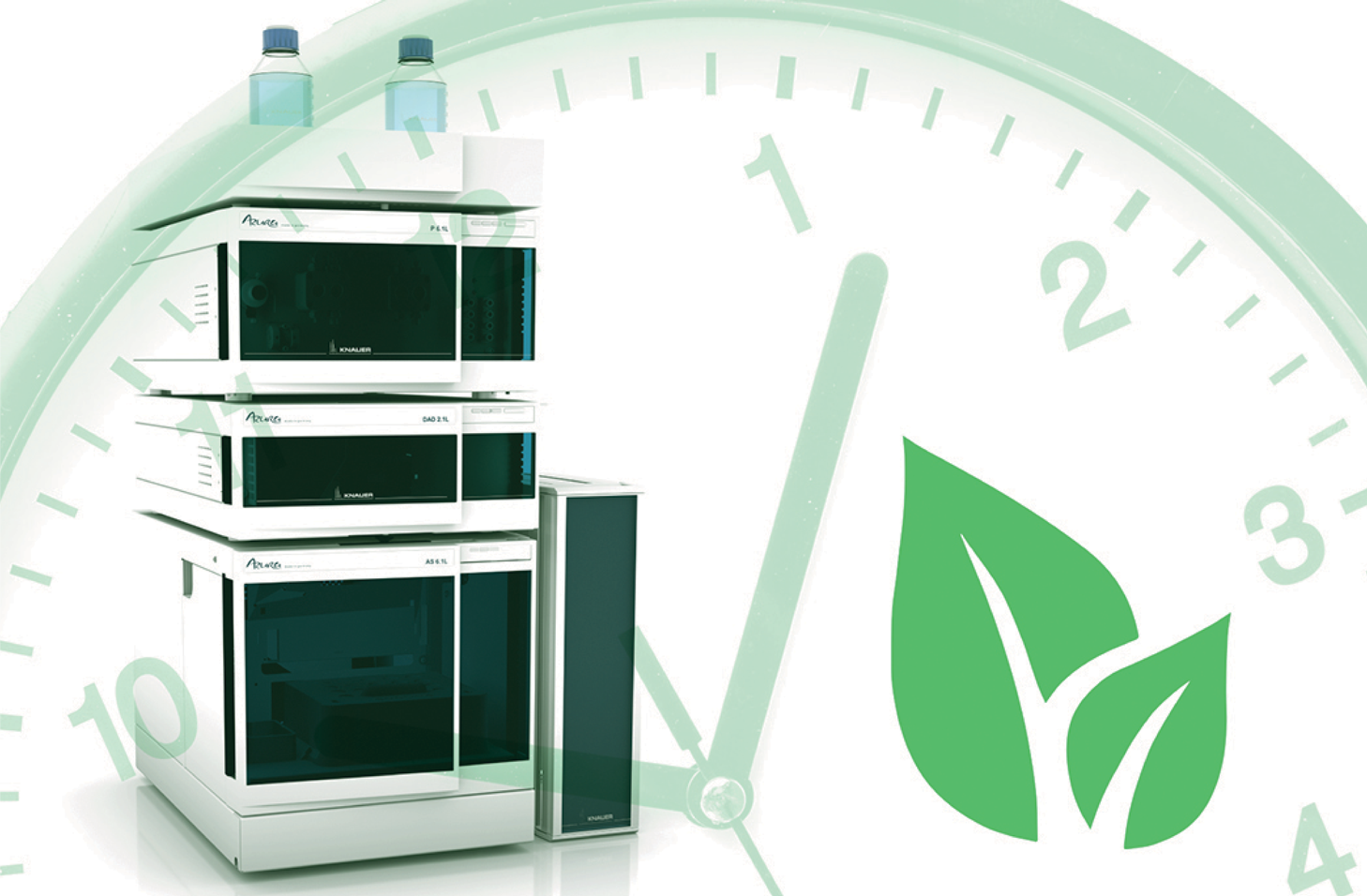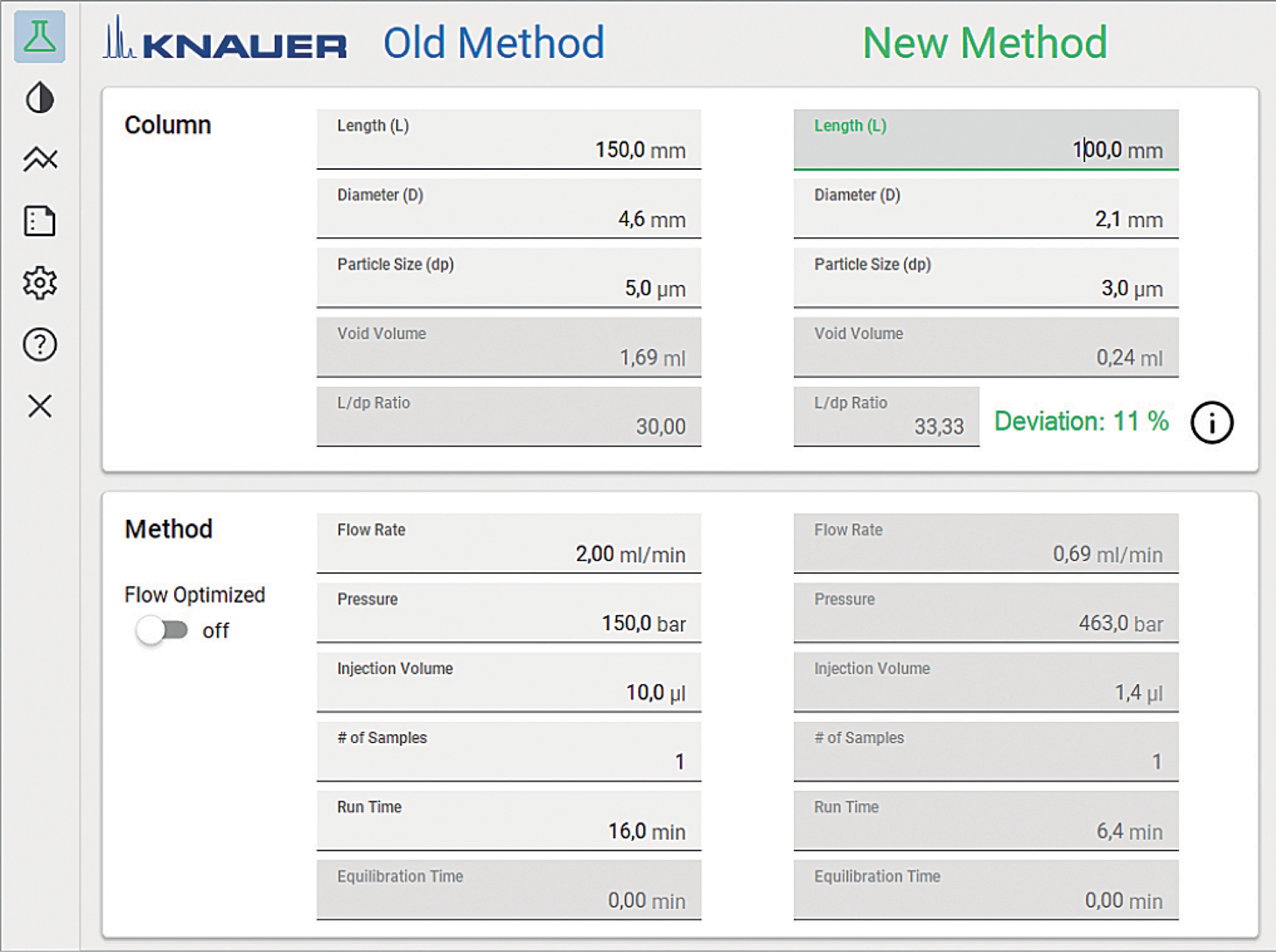Method conversion is the adjustment of chromatographic parameters in response to changes in column dimensions, where correct scaling of all method parameters is critical to maintain sufficient resolution. When pharma manufacturers make such adjustments, they must adhere to the pharmacopeia. The US Pharmacopeia (USP) 621 guidelines define the acceptable range of parameter alterations and calculations in a chromatographic method without fundamentally modifying the pharmacopeial analytical test. But to truly get the most out of method conversion – while staying compliant – can be tricky…
With that in mind, KNAUER has developed an HPLC Method Converter that ensures users are compliant with USP 621, while also aiming to maximize speed and sustainability. We spoke with Ulrike Krop, Team Leader Applications & Academy at KNAUER, to find out more.

Tell us about scaling chromatographic methods…
There are two types: upscaling and downscaling. Upscaling is mostly used in method development for preparative purifications. To save eluent and sample, the method is developed on an analytical system with small columns and then finally transferred to a larger column. Typically, the transfer is linear – the column length is kept constant, and the ID of the column is increased to increase the loading capacity.
Downscaling from HPLC to UHPLC on the other hand is one of the most common and well-known scenarios. The availability of UHPLC columns with very small particles, such as the KNAUER Eurospher II columns with 2 μm particle size, combined with systems with low dispersion, opens up new possibilities. You can speed up your analytical separation by reducing the extra column volume with low dispersion systems, such as the KNAUER AZURA® HPLC 862 bar system or the KNAUER AZURA® UHPLC 1240 bar system – both available with ultra-low dispersion technology (ULDC ).
Either way, the final method transfer can be easily realized by using the KNAUER HPLC Method Converter. Indeed, our latest software tool was designed to automatically calculate the suitable parameters according to your new column dimensions and particle size, while being USP 621 compliant.

What are the current challenges with USP methods? Do they need to be modernized?
Most USP chromatography methods were developed a long time ago with long columns and large particle sizes in mind. Now, with all the advances in chromatography systems and columns– with smaller size columns and particles – much faster analysis is possible. It is thus logical to adapt USP parameters and modernize them.
Furthermore, current USP methods might enable a simple and robust chromatographic analysis, but they aren’t optimized for efficiency and therefore have a higher environmental impact. That’s also why today many users are looking for options to modernize their methods. But so far this has been very limited due to USP constraints, as only minor adaptations are allowed.
The USP and most recently the European and Japanese pharmacopeias have allowed changes to modernize HPLC methods – specifically adjustments in column dimensions and particle size for both isocratic and gradient methods. And now, this must now be realized in the laboratories.
What are the main features of KNAUER HPLC Method Converter?
When we designed our method converter, we were thinking carefully about the customer’s key needs: optimizing the method to save time and resources. The KNAUER HPLC Method Converter is a very simple, effective, and intuitive tool, in a modern design.
For USP 621 compliant methods, adjustments must be in the range of -25 percent up to +50 percent of the ratio for the particle size and the column length. For many users this ratio is not apparent at first glance and not intuitive. And that’s why we decided to include this specific parameter in the KNAUER HPLC Method Converter – you just enter the HPLC method parameters of your original method, choose new column dimensions and particle sizes and you can see immediately whether the change in column dimension is accepted.
Based on the column parameters, such as particle size, column ID, and column length, this tool adjusts all other method parameters, accordingly, to increase the separation speed. The USP describes the process and the calculations for method conversion in detail, but this can be complex – even for experts. With our software, you can easily calculate method adjustments and improve your methods for higher productivity and a smaller environmental footprint.
Is sustainability an increasingly important driver for conversion to modern methods?
Absolutely. More and more customers are taking this parameter into account when designing and optimizing their methods. The KNAUER HPLC Method Conver ter suppor ts HPLC users to easily downscale their method. Downscaling means reducing the size of the column, thereby reducing the flow rate and the run time of the HPLC method – with a major effect on solvent consumption and the environmental impact of your analysis.
In one of our recent case studies, we changed the column dimensions from 150 x 4.6 mm ID to 100 x 2.1 mm ID. The flow rate was reduced from 2 ml/ min to 0.7 ml/min and the gradient time from 16 minutes to 6.4 minutes. The result? Eluent consumption per run (including equilibration time) was reduced from 48.9 ml to 6.8 ml, and the total run time (including equilibration) was reduced from 24.5 min to 9.9 min. That’s an 86 percent reduction in eluent consumption and a 60 percent reduction in time per analysis. And I think that perfectly highlights the environmental and economic benefits of modernizing your methods.
How easy is it to use the software? Do you offer support for customers?
The software is very easy to use. You just download for free the converter and type in your existing method parameters and the new column dimensions you would like to use. The new method parameters are automatically calculated and you can even export your data and the graphs.
We don’t think customers will need support for the converter, but KNAUER does offer a wide range of support and training for our customers. Depending on your needs, you can choose from our standard HPLC basics and troubleshooting training, software training, or customized training. This can be done online, here at KNAUER in Berlin, or at the customer’s site. If you need further support with method development, we are here to help!






